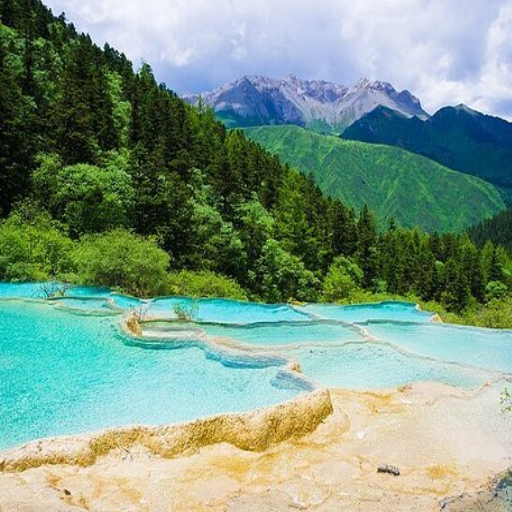The capital city of Sichuan Province, Chengdu, is one of the most attractive travel destinations because of its blend of modern development and rich historical landmarks. It is also famously known as the home of the giant panda and serves as a paradise for those who wish to experience wildlife tourism. In addition to the pandas, Chengdu has ancient temples, markets, and the world-famous Sichuan cuisine, which is characterized by its extreme spices. This guide will comprehensively cover the must-see places and essential travel information on Chengdu so that you are ready to explore the deceptively captivating Panda capital of the world.
What are the best times to visit Chengdu for a tour?
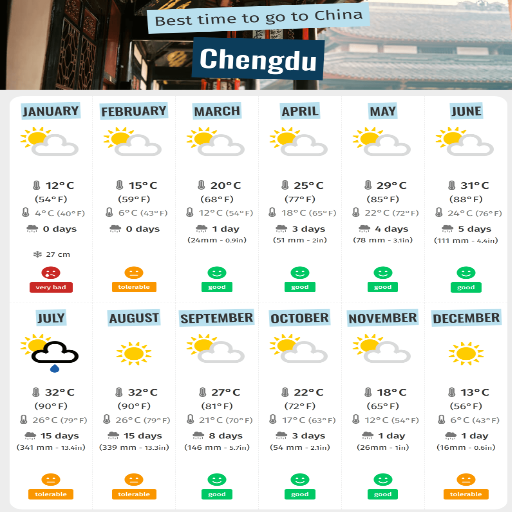
Is it best for Chengdu to travel from September to November?
Chengdu is always bustling with people visiting throughout the year, but people prefer staying in autumn when beautiful weather is from 15°C to 25°C. It is comfortable both for outdoor activities and exploring the city. Cheng Du also experiences less rain in comparison to the lingering summer clouds. This combination makes Chengdu travel best from September to November. As a bonus, autumn makes Chengdu’s parks and the surrounding areas even more beautiful with foliage that creates gorgeous landscapes. It is by far the most stunning place to visit in those months. Compared to the summer months, popular attractions tend to be less crowded, making the experience for travelers a lot better.
What is Chengdu’s attractions balance throughout the year in terms of the weather?
Extremes, from hot, humid summers to overcast and cold winters characterize the weather condition in Chengdu. This, in turn, heavily influences the activities one can engage in during different seasons of the year. Jinli Street and Qingcheng Mountain are ideal during spring, with mild temperatures and blossoms alongside greenery. The summer provides challenging, humid conditions marked by frequent rain, making outdoor activities such as visiting the Giant Panda base advantageous. The autumn season has more fabulous, drying September weather that is great for people’s parks and others alike. Planning your wintertime trip ensures you relish the delight that Chengdu boasts with warm hotpot cuisines and engage in the indoor exposure system of museums, teahouses, etc. Post all these tips we have to bear in mind that not only guides but considering even the seasonal weather makes Chengdu a lot more appealing.
When is the most convenient time for observing giant pandas in Chengdu?
Unlike the warmer months of Chengdu, giant pandas can be seen much more quickly between November and March. If you want to spot the pandas, morning hours are your best bet, and its during feeding times that you will spot them most active. Besides being much more easily visible, warmer months make Chengdu Research Base of Giant Panda Breeding and other panda bases even more enjoyable, with rich opportunities to appreciate and understand these animals in an almost life-like setting.
What are the top attractions to include in a Chengdu tour itinerary?

How do I get tickets and plan for the Chengdu Research Base of Giant Panda Breeding?
Whenever you decide to visit, verify the working hours of the Chengdu research base and Panda breeding center. You should be able to purchase their tickets and animal passes on-site. Plan for 2-3 hours of your visit to see all enclosures and exhibits, including the museum. Pandas are more active in the mornings, especially during the feeding hours of 8:30 am to 10:30 am. If possible, we recommend visiting during spring and autumn to avoid overcrowding. Don’t forget to wear comfortable walking shoes as the area is large and has slight hills. Guided tours will provide insights into panda behaviors and other possibilities for conservation attention, but you are free to wander the site as you choose.
What are the temples and monasteries I can’t miss in Chengdu?
1. Wenshu Monastery (Wenshu Yuan)
- Overview: Wenshu Monastery is a prominent Zen Buddhist temple with Tang-style architecture, renowned for its tranquil surroundings.
- Built: Tang Dynasty (618–907 A.D.)
- Area: 13 acres approximately
- Features: More than 300 cultural relics, including exquisite Buddha sculptures alongside large scripture, calligraphy, and ancient piece collections.
- Why Visit: This is a cultural landmark where one can indulge in spellbinding vegetarian food and enjoy a serene atmosphere for practicing meditation.
2 .Baoguang Temple
- Overview: It is known for the ‘1,000 Buddha Pagoda’ and other interesting relics that the Baoguang Temple possesses in the Xindu District.
- Built: Goals were achieved smoothly to wreath impressively in the East Jin Dynasty circa 4th Century AD, too.
- Features: 16 courtyards, over 500 stone sculptures,s, and an ancient library.
- Why Visit: The architecture of Baoguang Temple consists of well-preserved structures from multiple periods and provides valuable information about ancient Buddhist practices.
3. Daci Temple
- Overview: Daci Temple lies in Chengdu’s downtown and is an icon due to its historical prominence, which is further accentuated by the development of Zen Buddhism.
- Built: Constructed during Wei and Jin periods of 220-589 AD.
- Features: This ancient structure’s stunning carvings, wooden artifacts, beautiful gardens, and soothing atmosphere set it apart from other congested areas.
- Why Visit: Infused with ancient importance and contemporary Chengdu, the temple adds to the city’s beauty and becomes an eminent tourist attraction.
4. Zhaojue Monastery
- Overview: Zhaojue Monastery, also known as the “ancestor monastery of Zen Buddhism,” has a rich spiritual heritage.
- Built: It was constructed during the Tang Dynasty period.
- Features: The monastery’s vast main hall, accompanied by a tranquil lotus pond and ancient scripts, makes it stand out even more as it rests next to a rustic forest.
- Why Visit: Ideal for reflecting on and learning about Zen Buddhism’s ancestry, the monastery’s lonely setting in nature makes it a peaceful getaway.
These places are great to visit because they showcase Chengdu’s rich Buddhist history and architectural variety, which helps visitors appreciate the culture more in-depth.
On the trip, should I add a note about Mount Emei and Leshan Giant Buddha?
Yes, adding a day trip to Mount Emei and Leshan Giant Buddha is highly recommended because of their historical, cultural, and natural values. The Leshan Giant Buddha, standing at 71 meters tall and a UNESCO World Heritage Site, is the world’s largest stone Buddha and showcases ancient Chinese art and engineering. Not far away stands Mount Emei, one of four sacred Buddhist mountains in China, where formidable nature and ancient temples blend into impressive artwork with a high spiritual atmosphere. Both sites can be done in one day with some careful planning; however, an overnight stay allows for a better and more relaxing visit, especially when enjoying the sunrise or hiking on Mount Emei.
How can I experience Chengdu’s famous food scene?
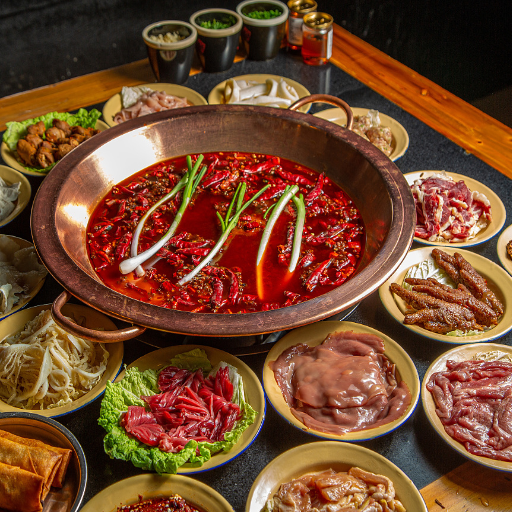
Where can the best-rated Sichuan hot pots in Chengdu be found?
If you visit Chengdu, you will find numerous hot pot places that serve authentic Sichuan cuisine and are well known for their rich and spicy hot pots. One of the most reputable places is Haidilao Hot Pot, which is also popular for its excellent service and variety of fresh ingredients. Among locals and tourists alike, Shu Jiu Xiang is quite popular for its rich and hearty broth Shu Jiu Xiang. If you want more of a restaurant feel, Tan Yu Tou Hot Pot is the place to go. It dishes up Sichuan hot pots with a twist, high-quality meats, and great sauces. These restaurants make Chengdu a hub for Sichuan hot pot, but each serves it uniquely.
What food must one try on a Chengdu food tour?
When undertaking a Chengdu food tour, it is a must to sample the world-famous Sichuan hotpot, known for its spices and complex flavoring. The use of Sichuan peppercorns provides an aggressive numbing flavor. The famous street food on Jinli Ancient Street or Kuanzhai Alley is obligatory, too, where local specialties like dan noodles, chuan chuan skewers, and Zhong dumplings exhibit Chun cuisine’s mosaic. Finally, visiting a traditional teahouse will show you a part of Chengdu’s tea culture that is as rich as the city.
What are some tea houses you should visit when you are in Chengdu?
Indeed, Chengdu is a city famous for its traditional tea houses, which allow visitors to partake in the culture. One of the oldest, Heming Teahouse in People’s Park, is well known for its quiet atmosphere and delicious tea. The Shunxing Old Teahouse is notable for featuring the Sichuan Opera as part of the tea service, so guests enjoy tea in a lively atmosphere. Another one is Yuelai Teahouse,e which is well known for its unique building and the increasing attention given to tea-drinking customs. These tea houses serve as the pedestal on which Chengdu’s tea-drinking practices and South-Western China’s history are built.
What are the best day trips and excursions near Chengdu?
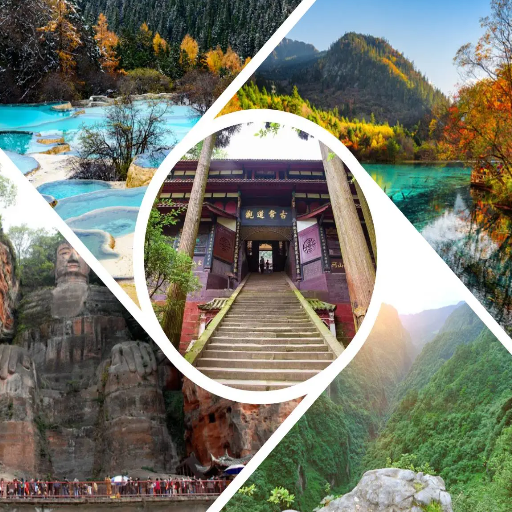
Is Jiuzhaigou Valley worth visiting from Chengdu?
Jiuzhaigou Valley is a popular place in China for its natural beauty and ecological significance. It is located some 330 miles (530 kilometers) north of Chengdu and, as a world heritage site, is famous for its multi-colored lakes, snow-capped peaks, and dense forests. It is well known for its karst landforms, but what attracts tourists most is the color of the water, which is vividly blue and has a high concentration of calcium carbonate combined with algae and mosses.
The travel duration from Chengdu to Jiuzhaigou is relative to their connection point. Air travel takes roughly one hour as there are flights to Jiuzhai Huanglong. It is about 1.5-2 hours from the airport to the valley. Car or bus travel is around 8-10 hours because of all the winding mountain roads.
The valley’s altitude ranges between 6,600 feet to 14,800 feet (2,000 meters to 4,500 meters), hence, visitors should consider altitude sickness when planning their trip. This area is best visited from September to October when the fall foliage is in full display. However, the site retains its breathtaking beauty throughout the year. Entrance fees are approximately ¥169-¥200 (depending on the season), and the area has a limited number of visitors allowed at a time to protect the environment, so reservations should be made ahead of time.
Nature lovers and photography buffs will find this area of Chengdu quite appealing. In addition, Jiuzhaigou Valley is a great place for excursions due to its beautiful scenery and wide variety of activities.
What are the steps for visiting the Dujiangyan Panda Base?
To have a fulfilling experience at the Dujiangyan Panda Base, one must be ready to put in thorough efforts and advanced planning. One aspect that requires prior setting up is ticket booking and services require that you secure tickets using their official portals or through recognized services. In addition to the check, there is a limit on the maximum number of daily attendees. The base’s site is around 55 km from Chengdu, and multiple transport options are available. Travel to the region can be via high-speed train to Dujiangyan City, accompanied by a short taxi journey to the base, or by direct bus from Chengdu Tourist Transportation Centers. One of the most sought-after is the Panda Keeper Program, which, like many other activities, has separate registration and fee requirements. Pack any necessary items like sunscreen, water, and comfortable clothing, considering there will be a lot of outdoor activity. Check the predicted conditions ahead of time, and prepare the trip for mild and clear days to enhance the experience.
What Tibetan sites near Chengdu should you visit?
While in Chengdu, you might want to visit the captivating Kangding town, often called the ‘gateway to Tibetan culture.’ This town offers spectacular mountain views along with vibrant Tibetan culture. Tagong Grassland, another must-see site, boasts of magnificent rolling hills and pastures with towering snow-peaked mountains. Visitors also get to see Tagong Monastery and an authentic nomadic lifestyle. Sertar Larung Gar Buddhist Academy is the last stop on the list. It is one of the largest academies of Tibetan Buddhism and is noted for its distinct structure, consisting of red wooden houses in a serene environment. This site, like the others, also allows visitors to immerse themselves in the culture and spirituality of Tibetan Buddhism. These sites make it easy for people to appreciate the Tibetan culture without traveling too far from Chengdu.
How can Chengdu be incorporated into a larger China tour package?
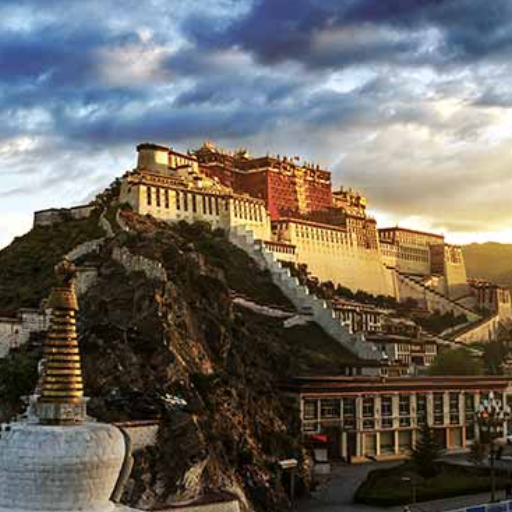
Which packages would best suit customers who wish to tour China, specifically Chengdu?
1. Classic Wonders of China Tour
Chengdu is usually paired with popular places like Beijing, Xi’an, Guilin, and Shanghai. Travelers can visit Chengdu Panda Breeding Research Base, experience the historical Chinese heritage in Xi’an, and view the beautiful scenery of Guilin. This tour is primarily a blend of cultural heritage and natural beauty, spanning 10-14 days.
2. Sichuan and Yangtze River Cruise Tour
These 8-11-day packages cover the essentials for tourists interested in the area of southwestern China, as well as Chengdu’s panda experience, Sichuan food, and a cruise on the Yangtze River. Excursions to Leshan Giant Buddha and the Three Gorges Dam are also notable.
3. Tibetan and Sichuan Highlights Tour
Suitable for travelers wanting to experience more culture, this tour has Chengdu as the starting point of Tibet and the Sichuan Tibetan area. It includes scenic places such as Kangding, Tagong Grassland, and Sertar Larung Gar, which are great for beautiful mountain views and contemplating Tibetan traditions. The average duration for these trips is 12 to 15 days.
Such packages allow customers to have various travel experiences incorporating Chengdu, appealing to culture and nature lovers.
What is the recommended number of days to visit Chengdu as part of an Australia-China tour?
2-4 days is the recommended length of stay in Chengdu. Chengdu provides numerous highlights to visit within the city like the Chengdu Research Base of Giant Panda Breeding, Jinli Street, and Wuhou Shrine. 2 days is the minimum recommended time to Chengdu, 4 days would be ideal if you wish to enjoy everything it has to offer. Hot pot dining may be scheduled during your stay for local culinary practices. Cooking classes can also be arranged. Those wishing to explore Southeast Tibet or the Sichuan mountains could benefit from the extra days, along with those who are staying in Chengdu as a base for other locations.
Is it possible to pair Chengdu with other sites of Sichuan Province?
Yes, Chengdu is a superb starting location for discovering numerous highlights in Sichuan Province. The most common combinations are visiting the Leshan Giant Buddha, a UNESCO heritage site roughly two hours away from Chengdu, and Mount Emei, famous for its sacred Buddhist centers, alongside other picturesque places. Jiuzhaigou National Park, renowned for its astonishing landscapes and many clear lakes, is another highlight that can be coupled with Chengdu, though this needs a more extended travel period. Chengdu’s extensive transportation network, which includes bullet trains and flights, makes it easy to reach these well-known places, thus enhancing your trip to Sichuan.
Reference sources
Frequently Asked Questions (FAQs)
Q: What are the best places to explore in Chengdu?
A: Chengdu offers numerous attractions for visitors to explore. Some of the best places include the Chengdu Panda Base, where you can see adorable pandas up close, the historic Jinli Street, the picturesque Wuhou Temple, and the famous Leshan Giant Buddha. Don’t miss the opportunity to visit Kuanzhai Alley for a taste of traditional Sichuan culture and cuisine in this city of gastronomy.
Q: How can I plan a classic Chengdu tour?
A: To plan a classic Chengdu tour, consider including top attractions like the Chengdu Panda Base, Jinli Street, and Wenshu Monastery. Add in a day trip to the Leshan Giant Buddha or Mount Qingcheng for a well-rounded experience. Many tour operators offer pre-designed itineraries, or you can contact us for a customized private tour tailored to your interests.
Q: What are the best times to visit Chengdu?
A: The best times for visiting Chengdu are typically spring (March to May) and autumn (September to November). During these seasons, the weather is mild and comfortable for sightseeing. Chengdu has a subtropical climate, so summers can be hot and humid, while winters are cool and damp. However, if you’re interested in seeing baby pandas, summer is the best time to visit the Chengdu Panda Base.
Q: How can I see pandas during my Chengdu trip?
A: The best place to see pandas in Chengdu is the Chengdu Research Base of Giant Panda Breeding, commonly known as the Chengdu Panda Base. This world-renowned conservation center is home to over 80 pandas, including adorable cubs. You can observe pandas in their natural habitat, learn about conservation efforts, and even see red pandas. Many tour operators offer panda tours as part of their Chengdu packages.
Q: What are some unique things to do in Chengdu?
A: Chengdu offers many unique experiences. You can try your hand at cooking Sichuan cuisine in a local cooking class, enjoy a traditional tea ceremony, or even play mahjong with locals in a park. Visit the Sichuan Opera for a fascinating face-changing performance, or take a day trip to the Dujiangyan Irrigation System, a UNESCO World Heritage site. For a truly local experience, spend an evening in one of Chengdu’s many teahouses.
Q: How does Chengdu compare to other top China destinations?
A: Chengdu is often considered one of the most livable cities in China, known for its relaxed pace of life and famous food scene. Unlike bustling metropolises like Beijing or Shanghai, Chengdu offers a blend of modern amenities and traditional culture. It’s also the gateway to exploring the natural beauty of Sichuan province. While it may not have as many historical sites as Xi’an or the dramatic skyline of Hong Kong, Chengdu’s unique charm and, of course, the pandas make it a must-visit destination for many travelers to China.
Q: What’s the best way to get to Chengdu?
A: Chengdu is well-connected to both domestic and international destinations. The city is served by two airports: Chengdu Shuangliu International Airport and the newer Chengdu Tianfu International Airport. Both offer flights to major cities within China and international destinations. Chengdu is also accessible by high-speed rail from many Chinese cities, making it easy to include in a multi-city China tour.
Q: What are some must-try foods in Chengdu?
A: As a UNESCO City of Gastronomy, Chengdu is famous for its delicious Sichuan cuisine. Must-try dishes include Kung Pao Chicken, Mapo Tofu, Twice-Cooked Pork, and the iconic Sichuan Hotpot. Don’t miss the opportunity to try “street snacks” at places like Jinli Street or Kuanzhai Alley. Remember that Sichuan cuisine is known for its spiciness, so be prepared for some heat!
Q: How long should I plan to spend in Chengdu?
A: To fully explore Chengdu and its surroundings, plan to spend at least 3-4 days in the city. This will give you enough time to visit the major attractions, including the Chengdu Panda Base, experience the local culture, and perhaps take a day trip to nearby sites like Leshan or Mount Qingcheng. If you’re interested in a more relaxed pace or want to explore more of Sichuan province, consider extending your stay to 5-7 days.
Q: Are there any cultural etiquette tips I should know before visiting Chengdu?
A: While Chengdu is a modern city, it’s good to be aware of some cultural norms. When visiting temples or religious sites, dress modestly and be respectful. It’s polite to accept food or drink when offered, even if you only take a small amount. If you’re invited to someone’s home, bringing a small gift is appreciated. When using chopsticks, avoid sticking them upright in your rice as this resembles incense sticks used at funerals. Lastly, Chengdu locals are known for their hospitality, so don’t be surprised by their friendliness!
